Who would have thought that a simple temperature sensor could still surprise us in 2025? And yet, NodOn has just pulled off a real tour de force with the unveiling of its new NodOn STPH-4-1 Zigbee temperature and humidity sensor, bringing a breath of fresh air to the world of home automation!
Gone are the days of having to change batteries on a regular basis, and the nuisance of low-battery notifications (we've all experienced that little stress when it happens at the wrong time). This little marvel made in France powers itself thanks to an ingenious integrated solar panel system. An innovation that kills two birds with one stone: ecological and practical!
But that's not all! This new NodOn Zigbee sensor hides many other tricks up its sleeve. Just imagine: 5-day autonomy in complete darkness, half-degree accuracy, and seamless integration with your existing home automation systems.
Let's find out more…
French expertise at the service of home automation innovation
Don't know NodOn yet? Let me introduce you to this French nugget which is the pride of our home automation ecosystem! Nestled in Saint-Cyr-en-Val, just outside Orléans (just down the road from me!), this company has forged a solid reputation in the world of connected objects.
What sets NodOn apart from the competition? Its commitment to the environment is more than just a marketing label! The company first made a name for itself thanks to its mastery of the EnOcean protocol, a fascinating technology that enables battery-free, wireless operation of devices by harvesting energy from their environment. Imagine a switch that generates its own energy simply by pressing it – it's simply brilliant! NodOn has developed real expertise in the design of innovative products.
This unique approach, combining technological innovation and environmental awareness, is perfectly reflected in this new Zigbee temperature and humidity sensor. It's as if NodOn had managed to capture the very essence of its DNA in a single product: ecological, innovative and resolutely forward-looking.
Unpacking the NodOn STPH-4-1 battery-free wireless sensor
Like all the manufacturer's latest products, the NodOn STPH-4-1 arrives in packaging made entirely from recycled cardboard. For some time now, the manufacturer has completely eliminated plastic from its packaging.
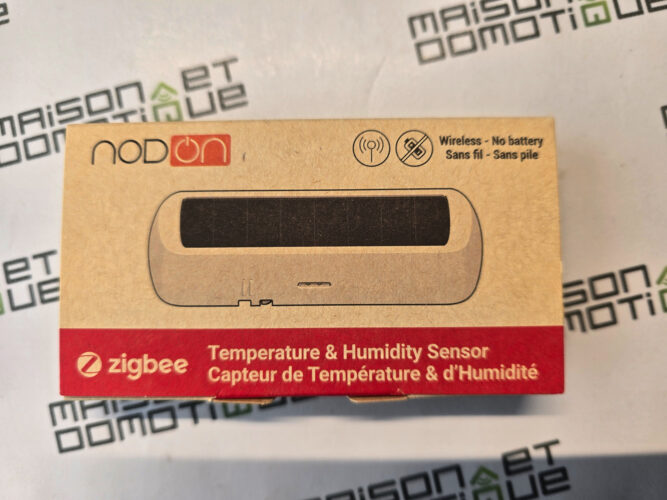
Inside, there are no frills: just the sensor and an instruction leaflet printed directly on the reverse of the packaging.
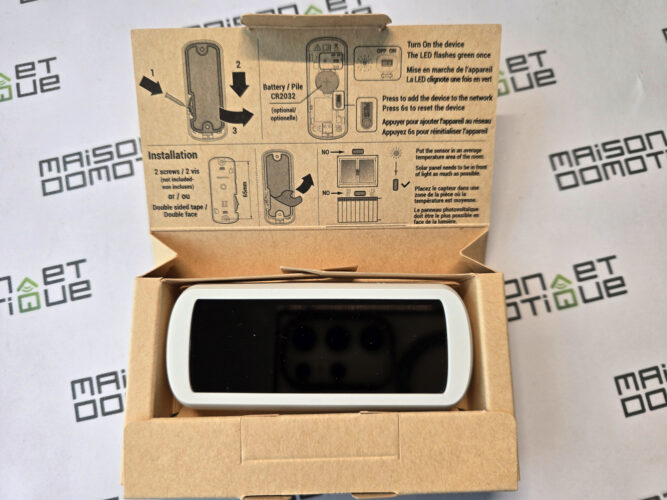
Of course, the first thing you notice is the little integrated solar panel that makes all the difference (and will make you forget where you keep your CR2032 batteries!).
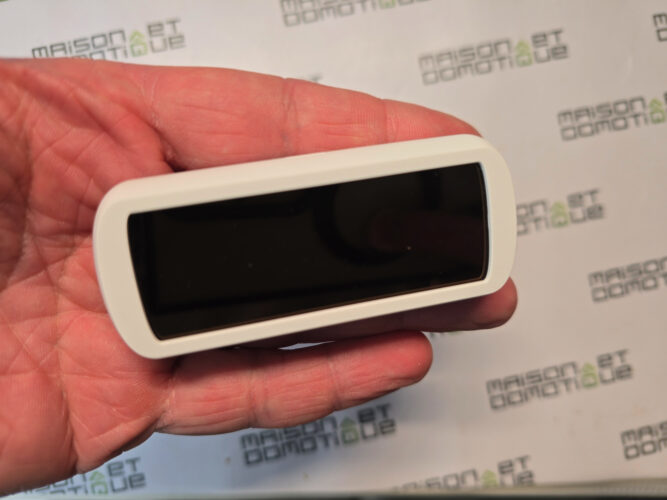
This self-powered system is really clever: all it takes is 200 lux of light for the sensor to recharge. To give you an idea, that's about the brightness of a well-lit corridor or a normal living room. Even your dark barn should do the trick! And once charged, this little gem can last up to 5 days in complete darkness. Not bad, eh?

But NodOn has thought of everything. For the more anxious or those who want to install the sensor in a really dark place, like a cellar for example, a CR2032 battery can be added as an option. In this case, you'll have a classic autonomy of 2 to 3 years – so you can sleep soundly!

The Zigbee protocol, chosen here rather than the usual EnOcean for this kind of technology, was not selected by chance. It offers excellent connection stability and minimal power consumption. And the icing on the cake: seamless integration with Zigbee2MQTT right out of the box. No more fiddling around and modifying code (more on that later)!
And all this in a very compact case, since the NodOn STPH-4-1 measures just 85 x 35 x 15mm for 30g.

And of course, the precision of the measurements is spot on, with an accuracy of 0.5°C, whereas the competition often only offers 1°C accuracy. It may seem like a small detail to you, but for your automated heating system, it makes a big difference!
Installation and use of the NodOn STPH-4-1
Despite its solar panel, this sensor should not be installed in direct sunlight! Unless you want to turn your living room into a virtual Sahara with readings at 50°C…
The ideal installation? A bright spot away from direct sunlight. In my office, it works perfectly with just natural ambient light. And when it comes to fixing it, you're spoilt for choice: simply place it on a piece of furniture, fix it with the double-sided tape supplied (handy!), or screw it to the wall for the more meticulous among us.
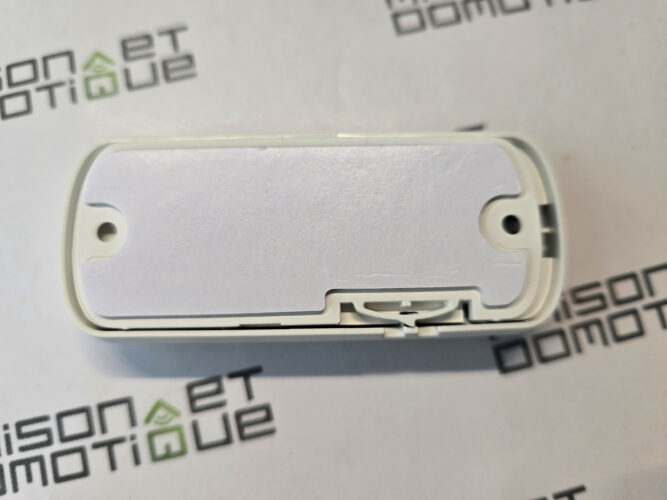
Pairing? Child's play! And here's where I have to let you in on a little secret: forget everything you know about long supports. Here, it's a one-second short press to pair, and a 5-6 second long press to reset. Easy as pie! The case is opened via a small clip, with no tools and no headaches.
A few common-sense rules to observe: avoid placing it near a source of heat (goodbye installation above the radiator), cold (the freezer is not its friend), or in a draught. Your sensor will repay you a hundredfold with remarkably accurate measurements!

Integration and reliability: when made in France makes the difference
Ah, home automation integration! How many times have I torn my hair out over poorly integrated products? But with this NodOn Zigbee sensor, it's a real relief!
First pleasant surprise: Zigbee2MQTT integration is impeccable right out of the box. No need to tinker with lines of code or search for solutions on forums for hours.
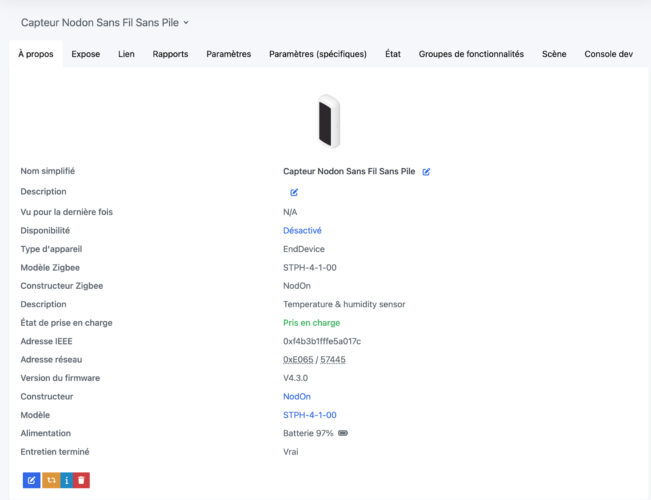
The manufacturer also advertises compatibility with the main home automation systems: Jeedom, Home Assistant, Zigbee2MQTT, Alexa, Tuya & Co, Domotikz, Edalso, Energeasy Connect, etc.
OTA (Over The Air) updates are of course available for future corrections.
Now, let's talk about data reliability, the sinews of war for a temperature and humidity sensor. I've compared this little gem with several other sensors in my installation, and the results are astounding. Accuracy is spot on, with better-than-average measurements, on the order of 0.5°C to 1°C better than its competitors.
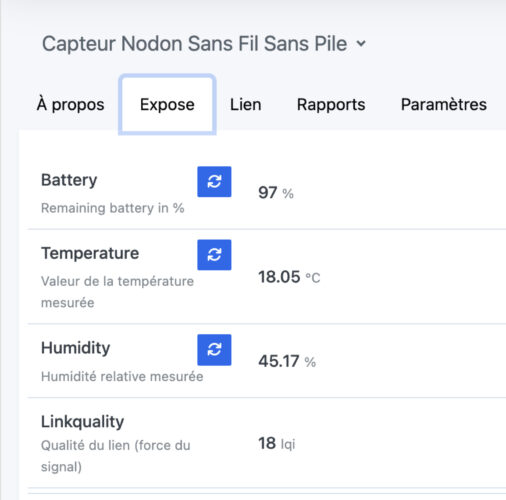
This reliability is no accident. Although some components are manufactured in China (as is the case for 99% of electronic products), the 100% French design makes all the difference. NodOn's engineers have clearly made a point of creating a product that keeps its promises.
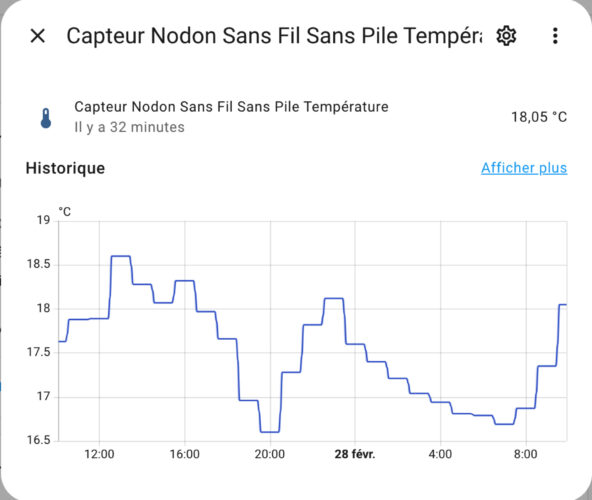
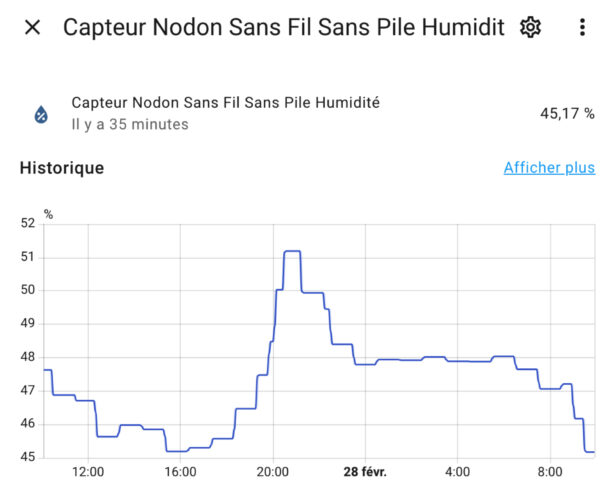
I let this sensor run for several weeks in a variety of conditions, and not a single outlier to report. It's this kind of consistency that makes the difference between a good product and an excellent one!
Price and positioning: a well-considered investment
Let's talk about the crux of the matter: price! At €49.90, this NodOn temperature and humidity sensor is clearly positioned in the premium segment of the market. And yes, it's around three times more expensive than the market's top-price products. But is it really that expensive?

To understand this price positioning, you need to look at what you get in return. Firstly, remarkable precision, with a resolution of 0.5°C for temperature. Then there's the famous energy autonomy that makes you forget about changing batteries. And let's not forget the manufacturing quality, with a French design that translates into exemplary reliability.
The sensor measures temperature and humidity every 100 seconds, and automatically transmits the information as soon as a variation of 0.5°C or 2% in humidity is detected. A real plus in terms of responsiveness!
So, who is this sensor designed for? I'd say it's primarily aimed at the more advanced user, those who already have a well-honed home automation installation and are looking to perfect it. This type of sensor will also be of particular interest to professionals, for whom maintenance is always a challenge: no batteries, so no maintenance, it's as simple as that!

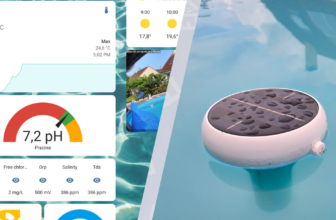




Please remain courteous: a hello and a thank you cost nothing! We're here to exchange ideas in a constructive way. Trolls will be deleted.